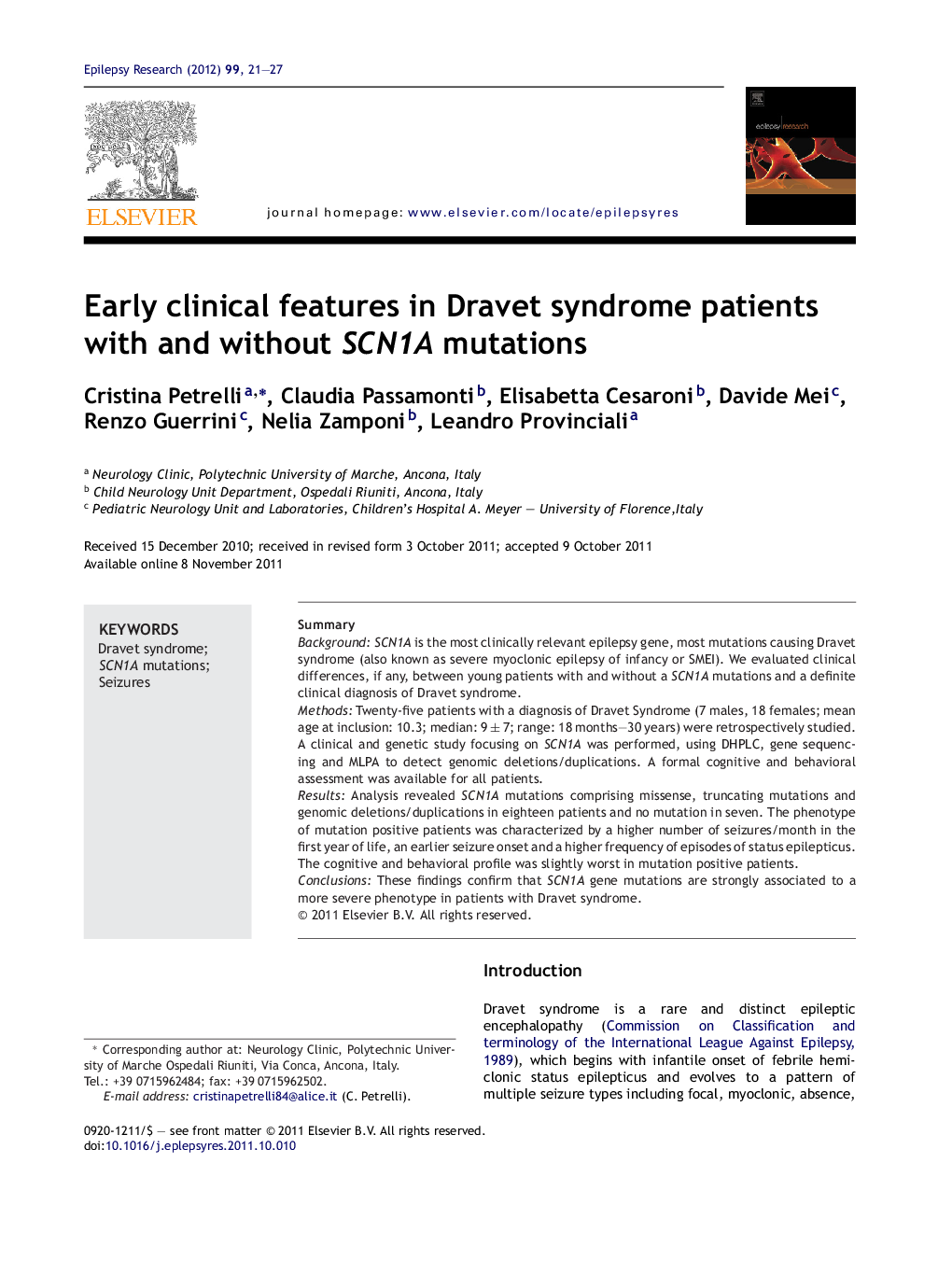| Article ID | Journal | Published Year | Pages | File Type |
|---|---|---|---|---|
| 3052431 | Epilepsy Research | 2012 | 7 Pages |
SummaryBackgroundSCN1A is the most clinically relevant epilepsy gene, most mutations causing Dravet syndrome (also known as severe myoclonic epilepsy of infancy or SMEI). We evaluated clinical differences, if any, between young patients with and without a SCN1A mutations and a definite clinical diagnosis of Dravet syndrome.MethodsTwenty-five patients with a diagnosis of Dravet Syndrome (7 males, 18 females; mean age at inclusion: 10.3; median: 9 ± 7; range: 18 months–30 years) were retrospectively studied. A clinical and genetic study focusing on SCN1A was performed, using DHPLC, gene sequencing and MLPA to detect genomic deletions/duplications. A formal cognitive and behavioral assessment was available for all patients.ResultsAnalysis revealed SCN1A mutations comprising missense, truncating mutations and genomic deletions/duplications in eighteen patients and no mutation in seven. The phenotype of mutation positive patients was characterized by a higher number of seizures/month in the first year of life, an earlier seizure onset and a higher frequency of episodes of status epilepticus. The cognitive and behavioral profile was slightly worst in mutation positive patients.ConclusionsThese findings confirm that SCN1A gene mutations are strongly associated to a more severe phenotype in patients with Dravet syndrome.
